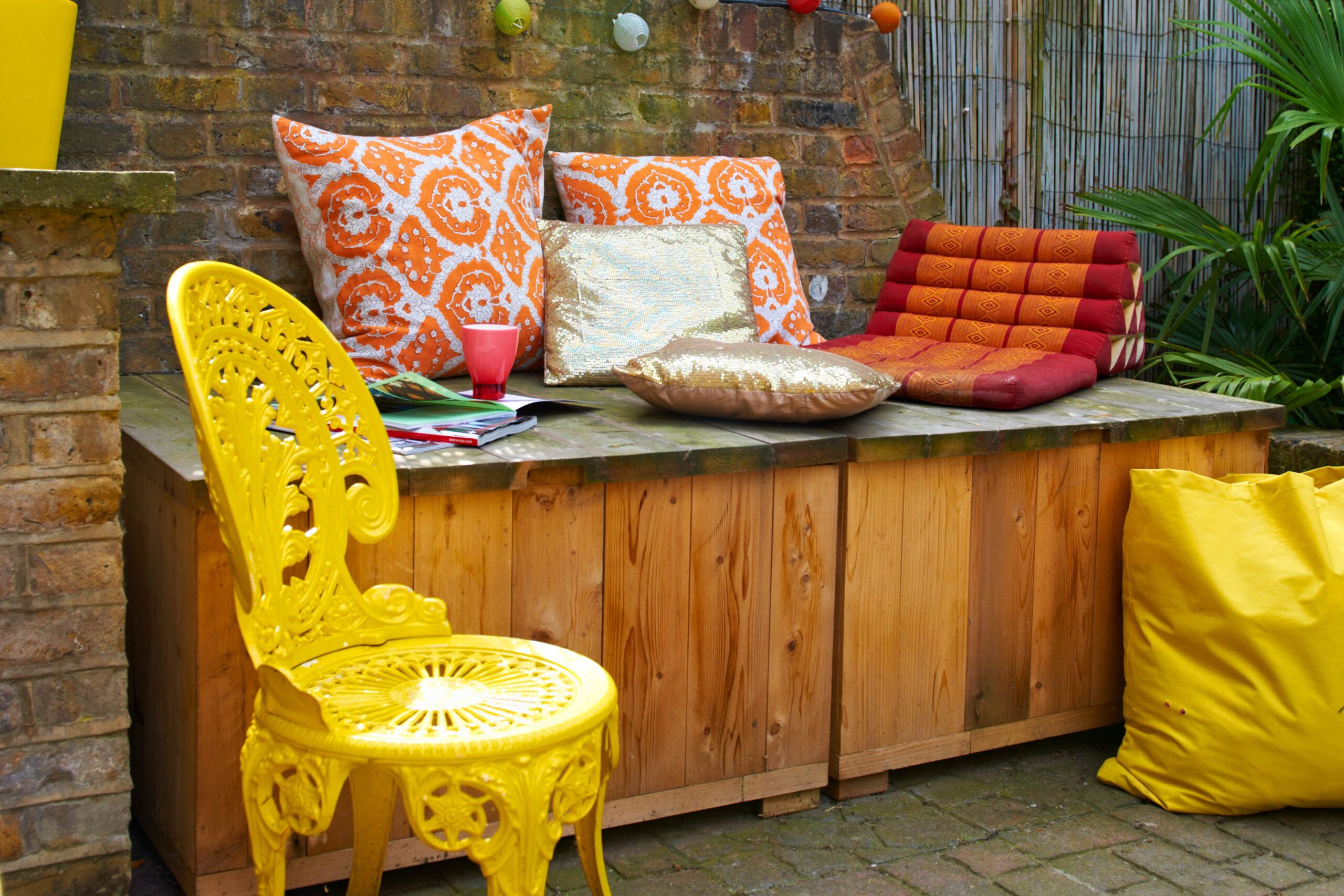Gardens aren’t just for looks—they’re also great places to relax and entertain. Once you’ve put time into creating your outdoor space, you’ll want a comfortable spot to sit and take it all in.
This article will give you 11 attractive and practical ideas for adding outdoor seating. We’ll cover options and expert tips that can boost your outdoor space and give you more ways to enjoy it—whether you have a small patio or a large backyard.
Simple Garden Bench
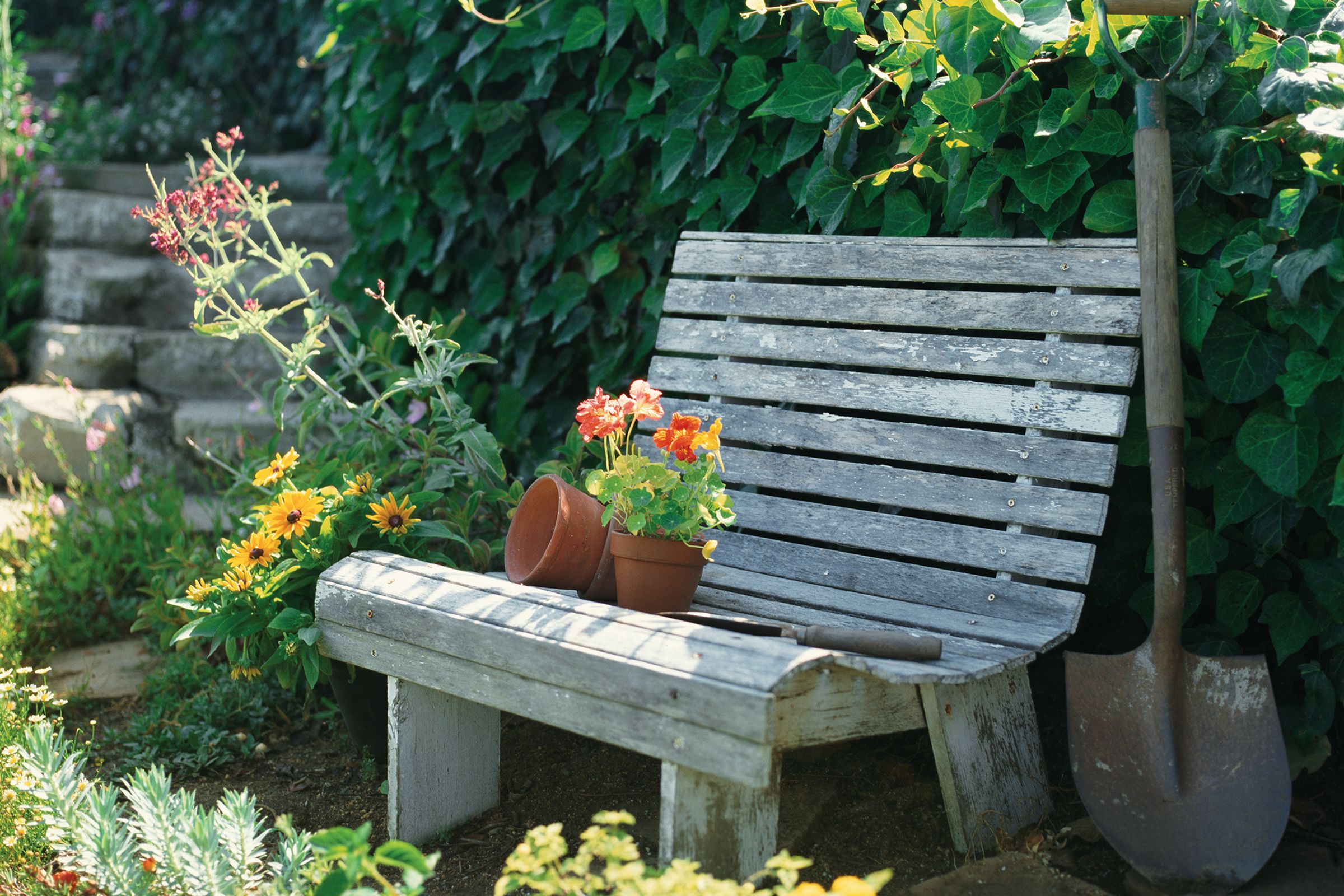
A classic garden bench offers functionality and style to any outdoor spot.
Building your own bench is an enjoyable and straightforward DIY project that allows you to customize the design to your space and tastes. We recommend using weather-resistant woods like cedar or teak, which naturally withstand outdoor elements. Alternatively, opt for durable and low-maintenance composite materials.
Position your bench in a spot that provides comfort and a picturesque view of your garden’s focal points.
Tree-Hugging Bench
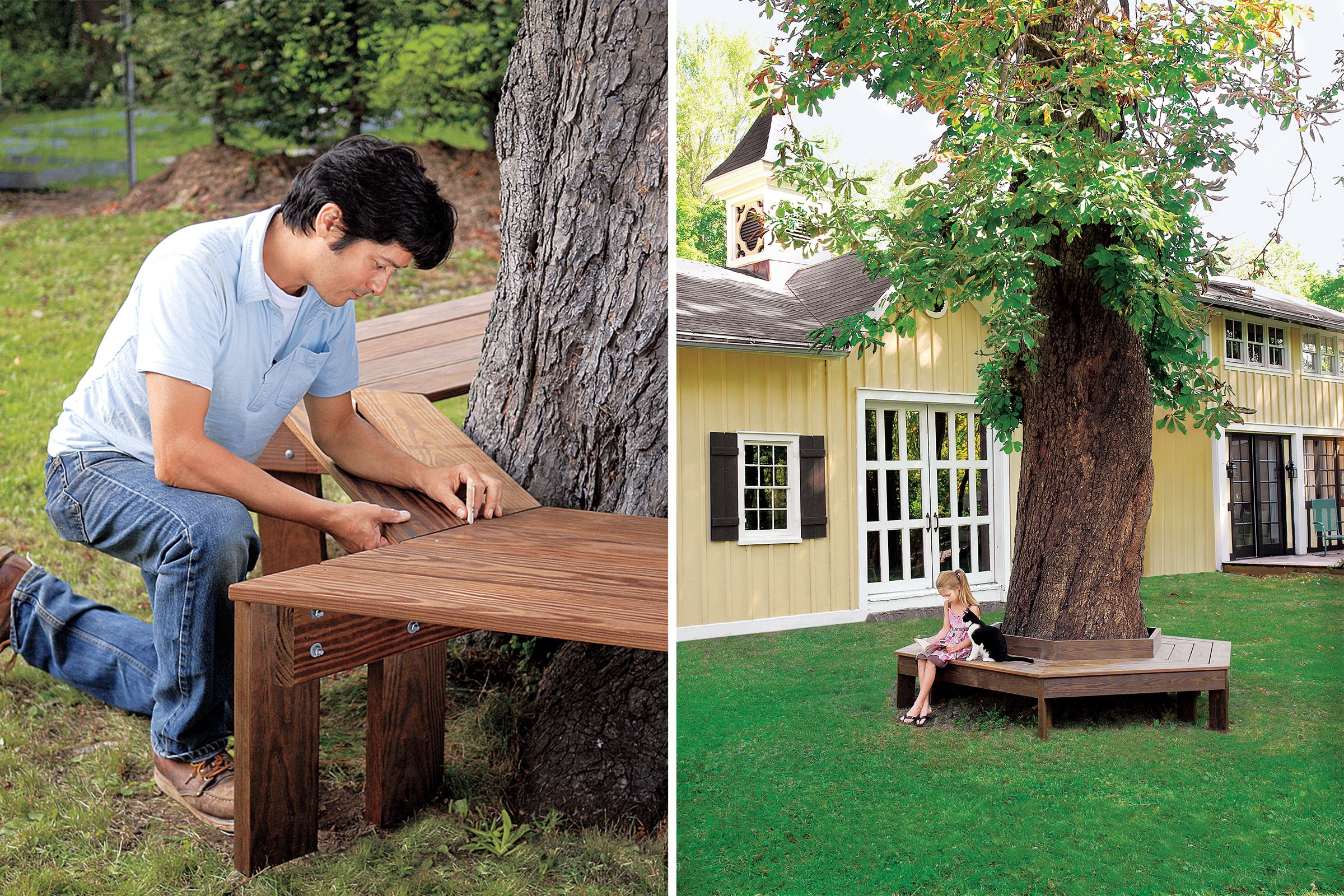
Transform the area around a favorite tree into a cozy seating nook with a tree-hugging bench.
When constructing a tree-hugging bench, use materials that can withstand outdoor conditions and potential tree growth. We recommend decay- and termite-resistant wood species like redwood or ipe for longevity. When designing your tree-hugging bench, leave ample space around the trunk to accommodate future growth and prevent damage to the tree. Apply a UV-resistant finish to protect the wood from sun damage. Regular cleaning and occasional fastener tightening will keep your bench in top condition.
Surround the bench with flowers or shrubs to increase the allure of your outdoor space.
Dining Chairs To Stylish Bench
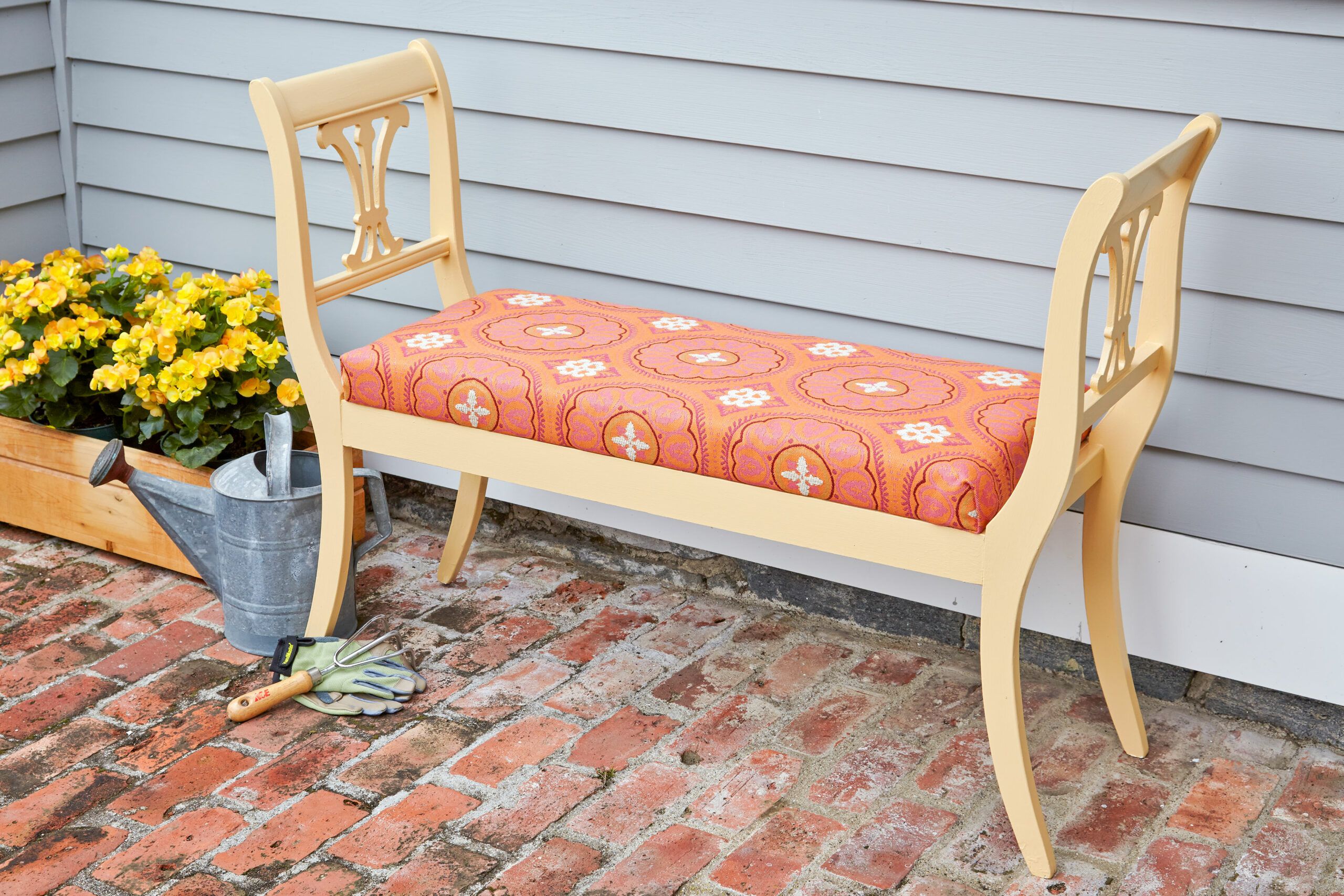
Upcycling old dining chairs into a charming outdoor bench is an excellent way to repurpose furniture and upgrade your garden or entryway. You’ll only need basic carpentry skills and an afternoon to complete this project.
To begin, select two sturdy dining chairs with similar styles and remove the seats. To create the bench seat, connect the chairs using wooden planks and check that the structure is level and secure. Sand the entire piece to create a smooth surface, then apply a weather-resistant paint or stain to protect the wood.
Add weatherproof cushions to make your bench comfier and introduce pops of color or patterns. Store cushions indoors during inclement weather to prolong their life. You can also embellish the bench with stencils or hand-painted elements.
Thrifted Bistro Set
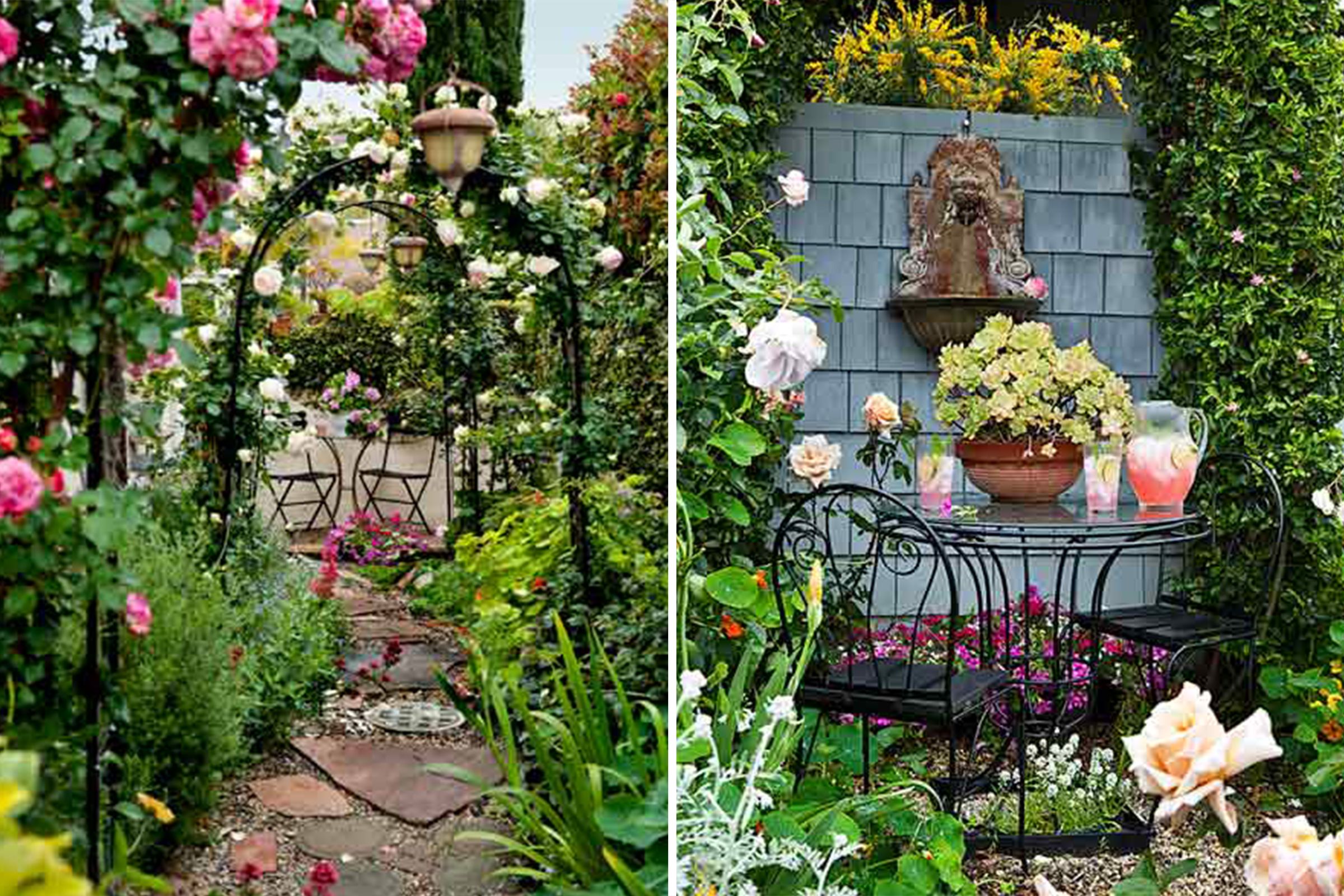
Add Parisian character to your garden or patio by thrifting or buying a bistro set secondhand. When searching for a bistro set, look for durable, weather-resistant pieces made of wrought iron or cast aluminum.
Give your table and chairs new life with a fresh coat of paint. Choose colors that match your home, or go for a timeless look with black or white. Before painting, thoroughly clean the furniture and apply a rust-inhibiting primer for longevity.
Add comfortable cushions and a small outdoor rug to define the seating area and make it more inviting. Place potted plants or hanging baskets nearby and incorporate string lights or lanterns that add a warm, ambient glow during evening gatherings.
Secret-Compartment Storage Bench
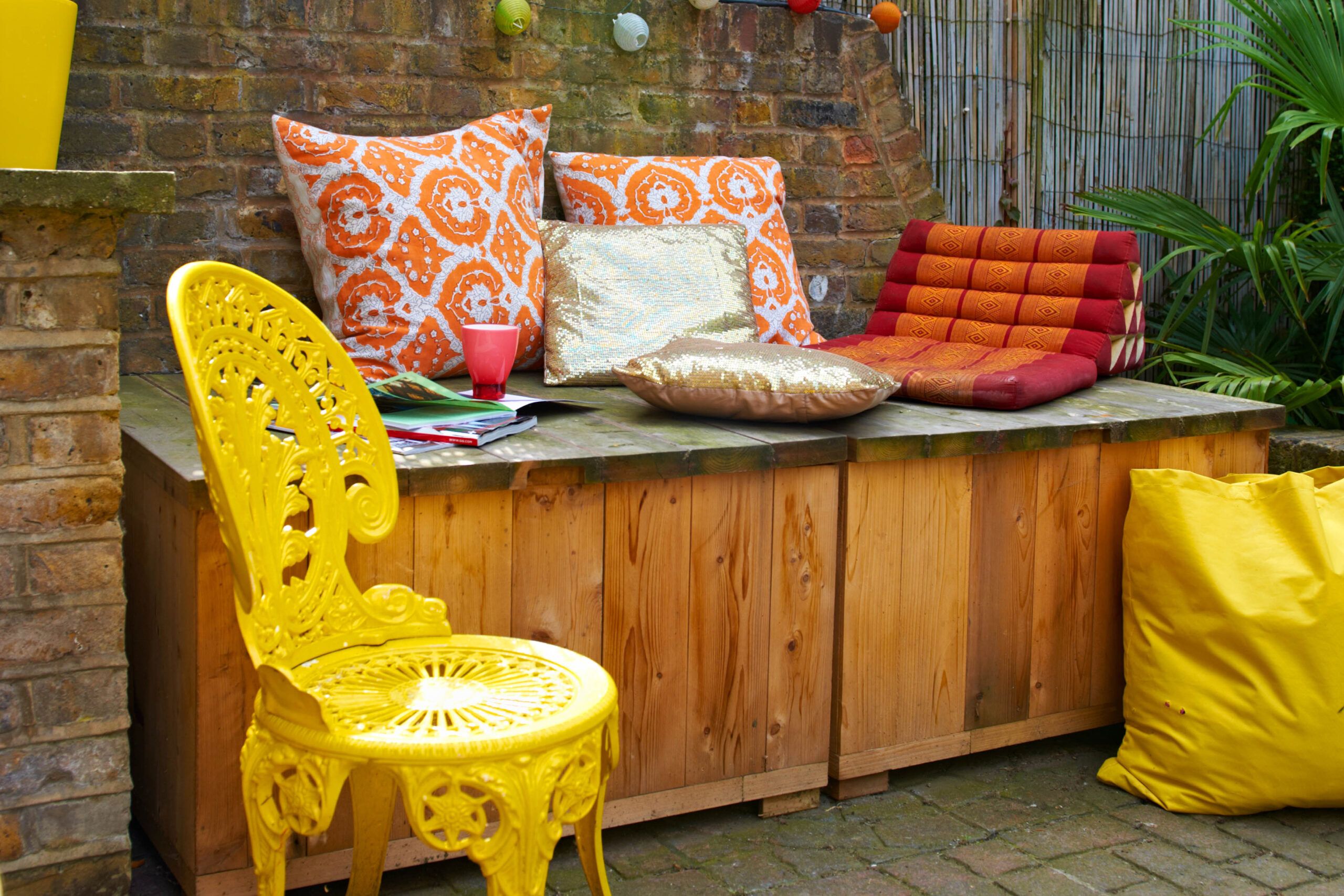
A storage bench with a hidden compartment doubles as seating and a storage solution, making it ideal for small patios or decks. The hidden compartment is perfect for storing gardening tools, outdoor games, or extra cushions.
Whether building or purchasing a pre-made storage bench, choose weather-resistant materials and seal the lid to protect your items from the elements. To construct a DIY storage bench, use cedar or pressure-treated lumber for the frame and marine-grade plywood for the storage compartment. Install gas struts to support the lid and make it easier to open and close.
Add weatherproof cushions and throw pillows to create a comfortable and durable seating area. Personalize it with lanterns or potted plants.
Planter Bench
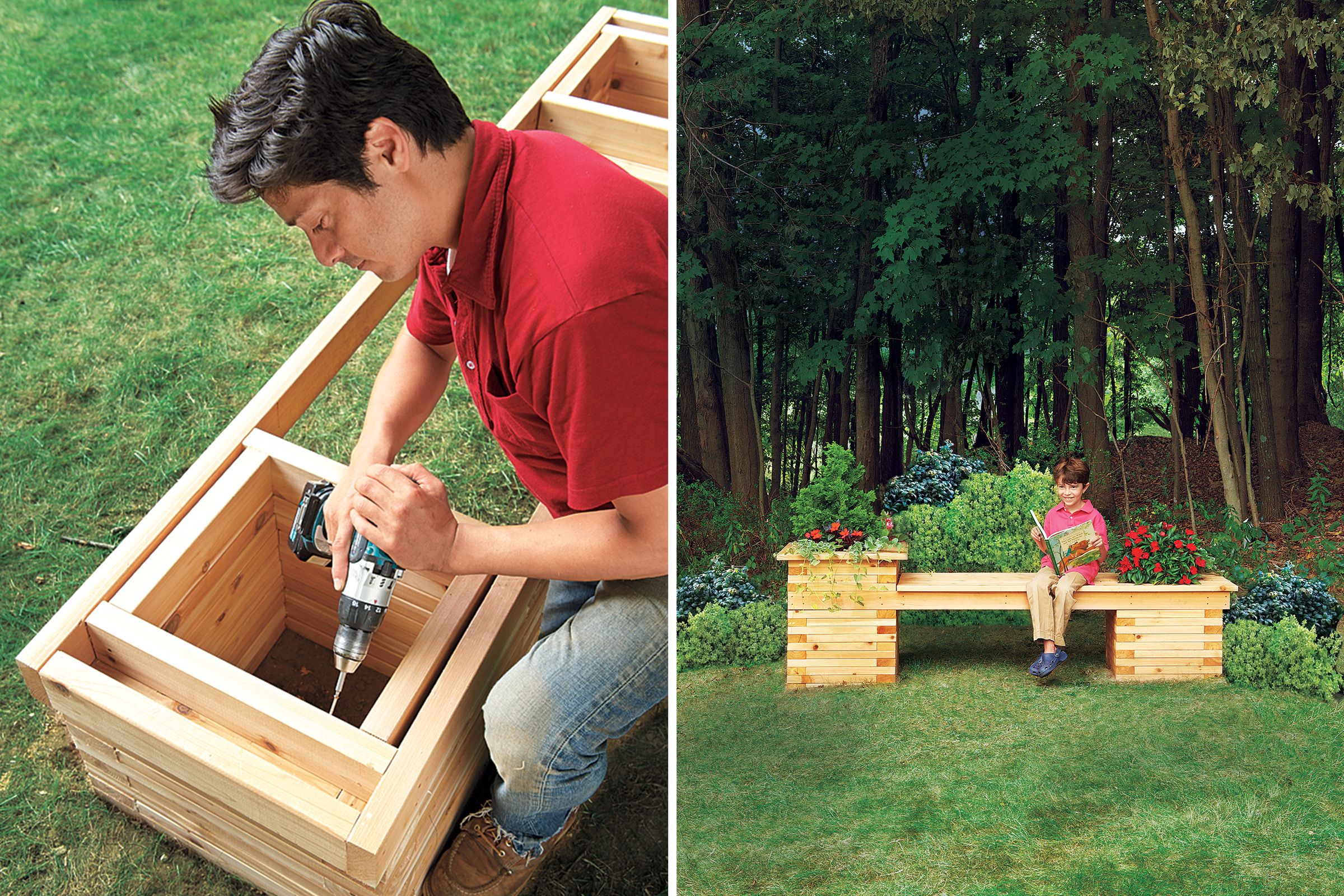
A planter bench combines seating with greenery to create a harmonious focal point in your garden or patio.
When designing a planter bench, consider the plants you want to grow and ensure the planter boxes have proper drainage. Use rot-resistant cedar lumber for the bench structure and planter boxes. Line the planter boxes with landscape fabric before adding soil to prevent soil from washing out through drainage holes. Choose plants that thrive in your climate and have similar sunlight and watering requirements.
To maintain your planter bench, regularly inspect the wood for signs of wear or water damage and apply a protective sealant as needed. Prune and care for your plants according to their specific needs, and consider installing a drip irrigation system for easy watering.
Classic Westport Chair
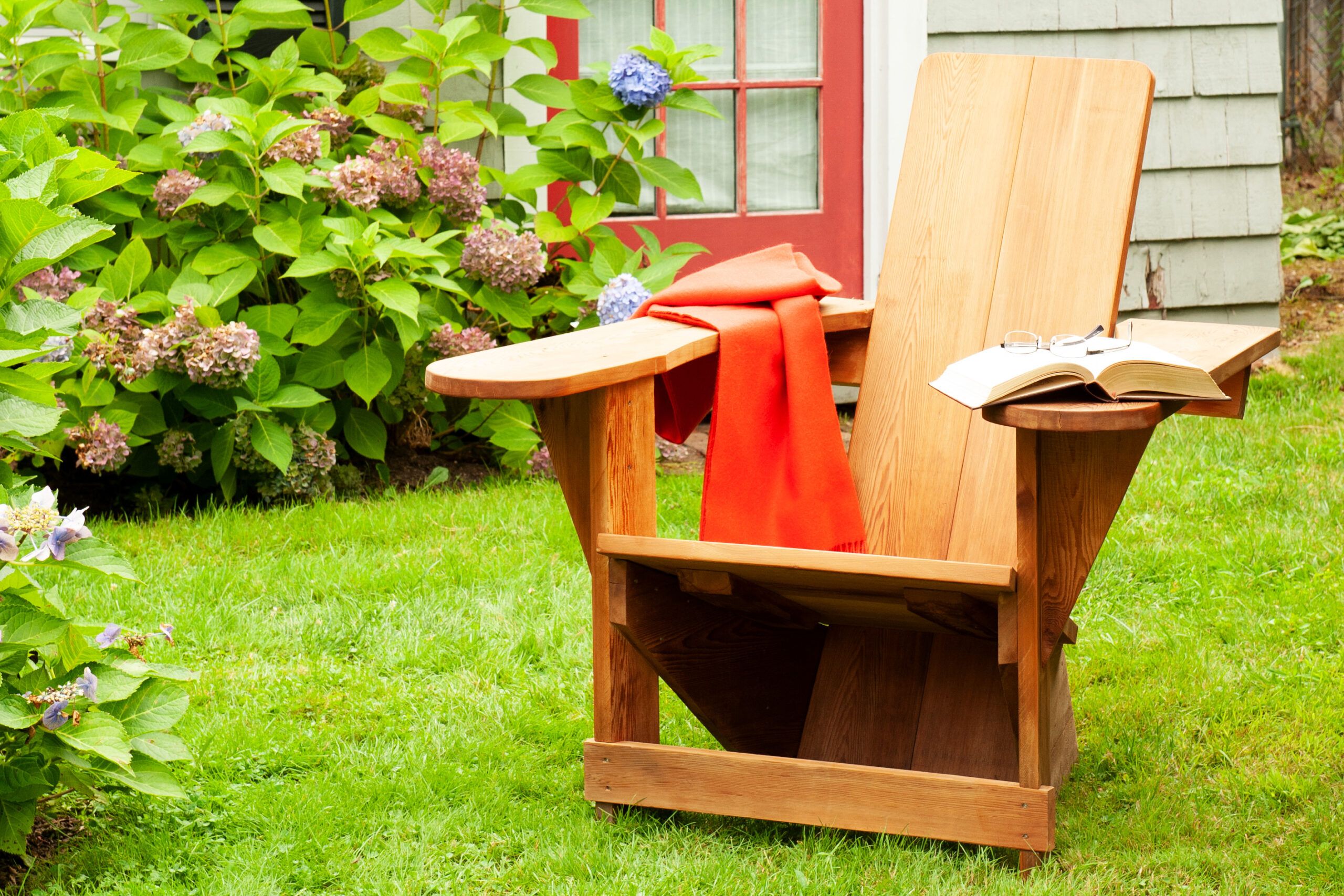
The Westport chair, a precursor to the iconic Adirondack chair, features wide armrests and a slanted back.
Building a Westport chair from scratch allows you to customize the size and finish. Opt for durable woods that naturally resist decay and insects, such as cedar or teak. Pay close attention to the angle of the seat and back for comfort. Sand all edges smoothly and apply a weather-resistant finish to protect the wood and highlight its natural tones.
We recommend adding a cushion or throw pillow and experimenting with different paint colors or wood stains. Add a matching ottoman or side table to complete the relaxing setup.
Roomy Adirondack Chair
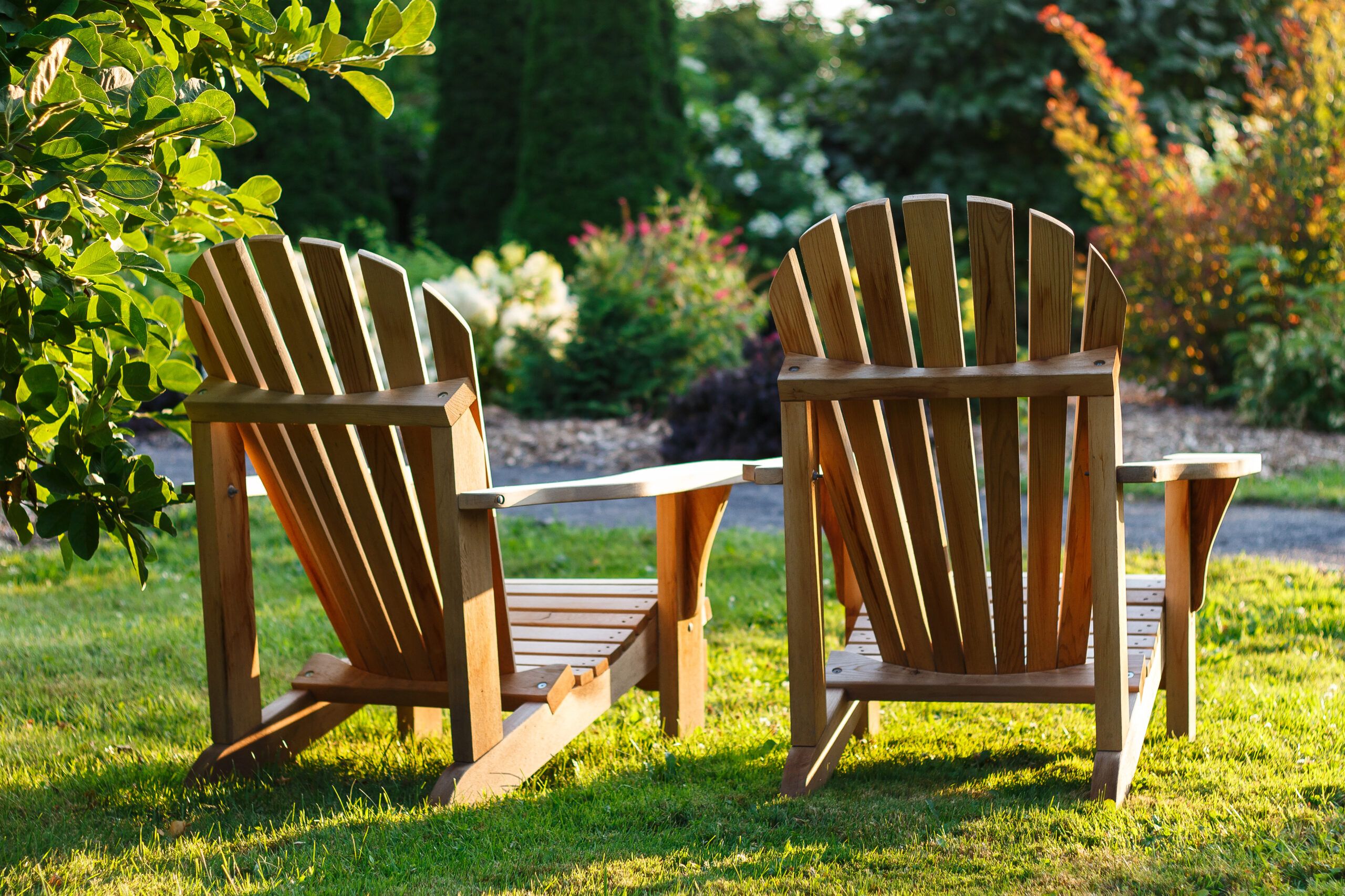
The Adirondack chair, with its distinctive fan-shaped back and wide armrests, is a classic outdoor seating option.
Building your own Adirondack chair allows you to customize the size and design. Choose weather-resistant woods like cedar, teak, or marine-grade polymer lumber for longevity. Use stainless steel hardware to prevent rust and maintain the chair’s structural integrity over time.
Add a headrest pillow or seat cushion to increase the comfort of your Adirondack chair. Personalize it with paint that complements your home, or leave it natural for an organic, rustic look. Group multiple Adirondack chairs together to create a cozy conversation area in your outdoor space. Surround the area with outdoor lanterns or a fire pit for an idyllic spot.
Double-Duty Cedar Compost Bench
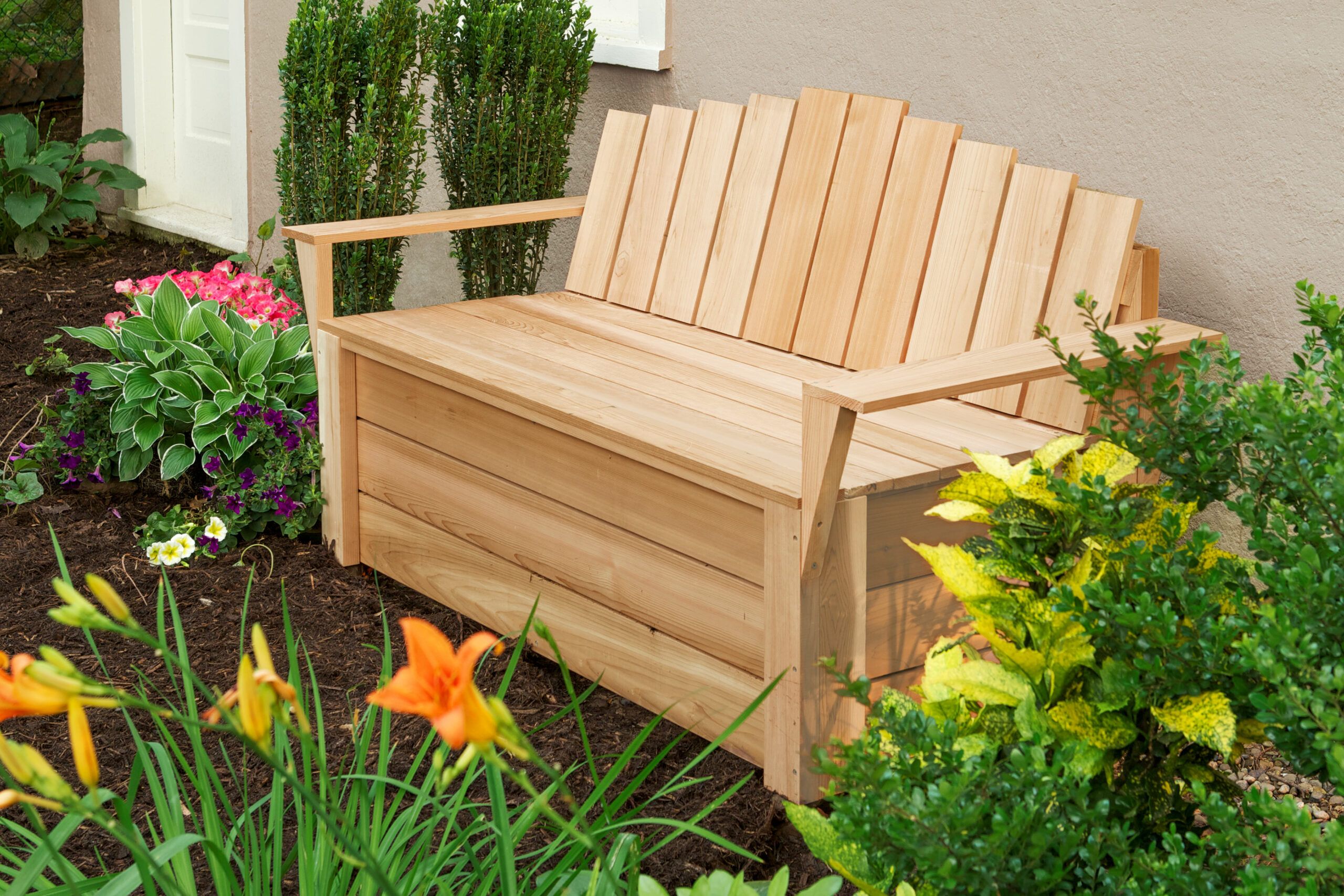
A cedar compost bench is an innovative solution that combines seating with eco-friendly gardening. The open-bottomed design facilitates organic composting, making it an efficient and attractive addition to your outdoor space.
When building a cedar compost bench, use rot-resistant cedar. Incorporate slats or small gaps in the seat for proper ventilation. Install a hinged lid for easy access to the compost compartment and to keep pests out.
Regularly turn the compost and monitor moisture levels to maintain your compost bench. Add a mix of green and brown materials to create nutrient-rich compost for your garden.
Clean the bench surface periodically and apply a protective sealant to the wood to preserve its appearance and extend its lifespan. Surround the bench with aromatic herbs or flowers.
Picnic Table and Chairs
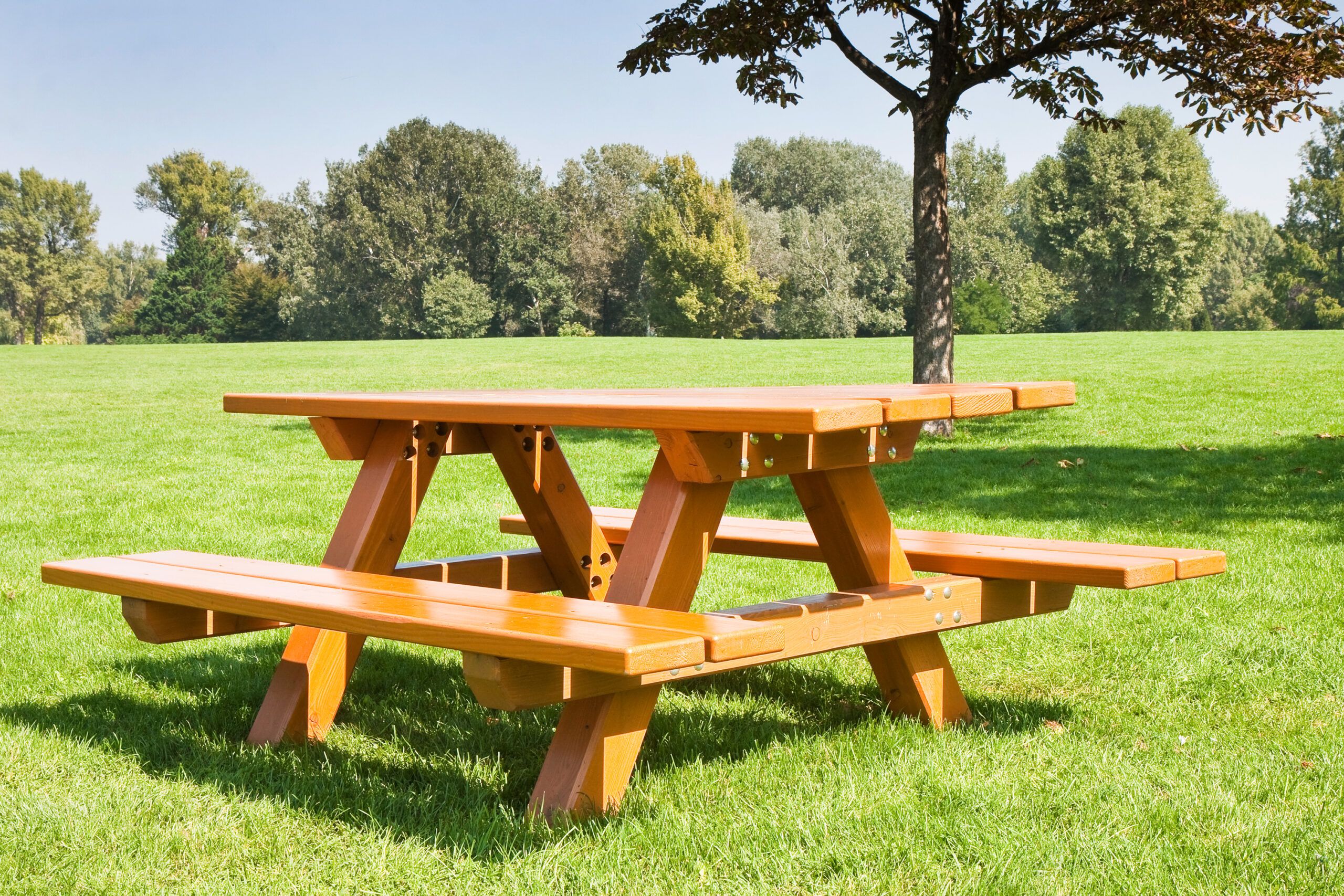
A well-designed picnic table and chair set provide ample seating for family gatherings, barbecues, and casual dining al fresco.
When selecting or building a picnic table set, consider the size of your space and the number of people you typically entertain. Opt for durable materials like pressure-treated pine, cedar, or composite lumber that can withstand outdoor conditions. Make sure the table and benches are sturdy and level to provide a comfortable dining experience. Apply a weather-resistant finish to protect the wood and improve its natural beauty.
To make your picnic area more inviting, add colorful outdoor cushions to the benches. We recommend installing outdoor lighting, such as string lights or solar-powered lanterns. Decorate the table with a weather-resistant table runner and centerpiece.
Arbor Bench
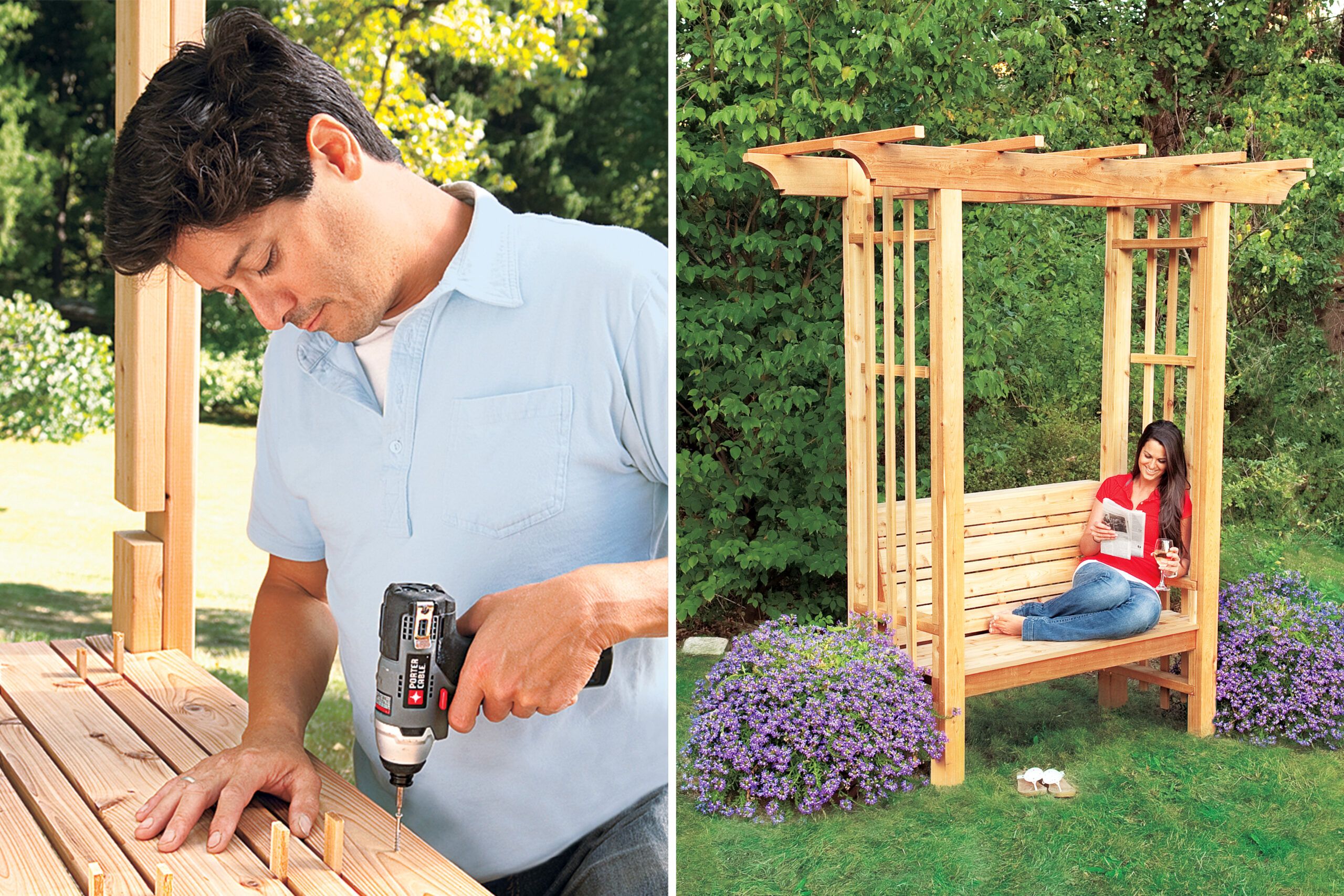
An arbor bench provides a shaded spot to relax and serves as a support for climbing plants.
When designing an arbor bench, consider the style of your garden and choose a design that complements your existing landscaping. Use weather-resistant materials like cedar or pressure-treated lumber for the arbor structure and bench. Securely anchor the arbor to withstand wind and support the climbing plants’ weight. Install lattice panels or wire mesh on the sides and top of the arbor to support vines and create a more intimate space.
Select climbing plants that thrive in your climate and offer the desired level of shade and privacy. We recommend fragrant varieties like jasmine or climbing roses. Add weatherproof cushions and incorporate outdoor lighting.
